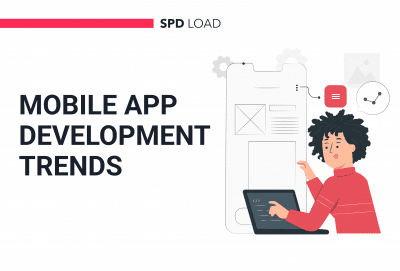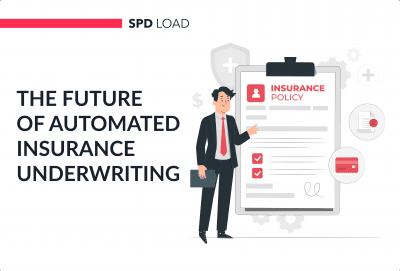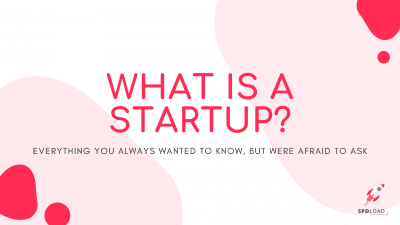SaaS Pricing Models 101: Strategies & Examples
- Updated: Nov 14, 2024
- 17 min
Founders put in endless hours building the perfect SaaS product – conducting user interviews, brainstorming new features, and testing interface themes.
But rather than chasing perfection, it’s better to focus on building a profitable product.
Nailing pricing is the foundation for high growth and a profitable business model. On average, teams spend only 6 hours choosing an initial pricing strategy.
There are a few key factors that determine how much complexity your pricing process requires:
- Your SaaS unit economics
- Your positioning (including product packaging and brand value). Here’s everything you need to know about building a brand from scratch, from concept to execution.
- Pricing strategy
- Tactics for making pricing attractive
Let’s explore the best ways to develop a winning SaaS pricing model and make the most of those 6 hours.
Not sure which software model is right for you? Explore the ASP model vs SaaS model breakdown.
Unlock your business's full potential with our tailored SaaS solutions — start transforming your ideas into reality today!
Why You Need a SaaS Pricing Strategy
Your SaaS billing model needs a revision every 6 months. The motivation is simple. As your product quality grows, your price should grow too. There is a holistic complex of reasons why I say so.
Yet, let me be short and clear. There are only 3 key points:
- the price is an equivalent of the efforts spent in each product’s direction
The price of your SaaS is determined by the total cost of development, marketing, and sales activities. Thus, the quality boost deserves more compensation to continue quality improvement.
It seems to be easy to understand, but there are many founders, who refuse to set up a pricing process. The main motivation to do so is a fear to lose customers’ base. This is counterintuitive.
The point is that users are already paying for your product for the value it gives. Consequently, they are able to pay more for greater value.
- the price is one of the main, yet underrated growth factor
70% of SaaS products are focused on customers’ acquisition as the main growth channel. Only 10% talk about the pricing model as a prospective growth factor. But notice, that growth doesn’t mean more customers. It means more profit.
So, pricing is a more effective way to increase the lifetime value of a customer. You multiply the received revenue, but spend the same amount of resources to attract and retain customers.
As research shows, the pricing is 200% more effective than improvements in customer retention. And is 400% more effective than improvements in customer acquisition. For startups, using a CAC calculator is essential to monitor customer acquisition costs.
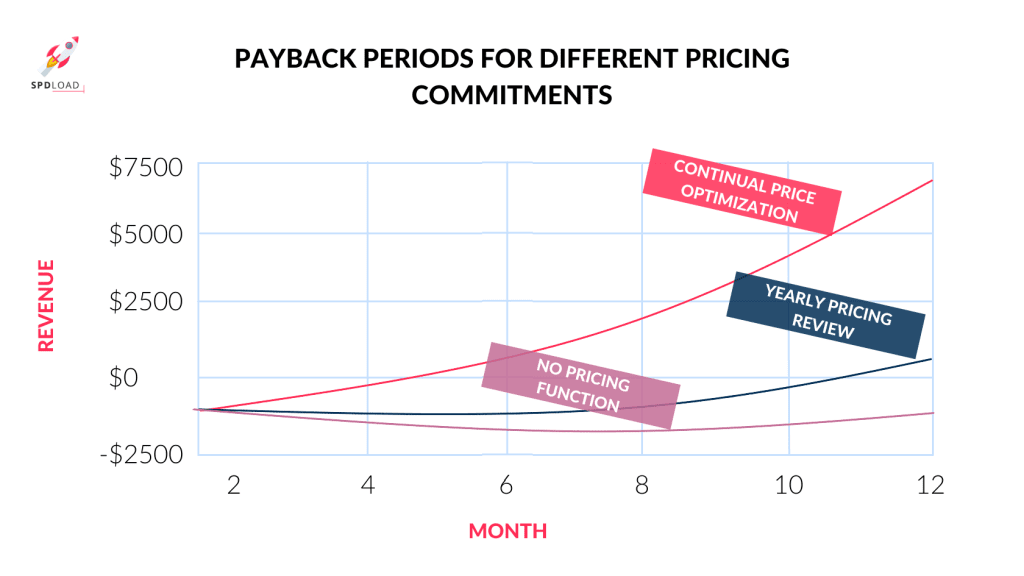
- constant re-evaluation of the price helps to drive revenue
The constant revision of the price is the vital need for your SaaS. Because the unit-economy of your startup changes rapidly. Once set price leads to losing profit.
As research shows, the continual change of pricing drives sales on 15% more, than other pricing policies.
Pricing is more art than science, especially for early-stage startups.
The best pricing strategy is to stay very connected to your early customers.. Try to talk to several of them a day if you can. That way you can hear how they feel about you, your product, and your pricing—instead of just seeing how they behave based on quantitative data.
When you’re just starting out, you don’t have a ton of data to work with yet, so it doesn’t make sense to set your pricing structure and assume it will always be that way. Instead, your strategy is to find the best pricing structure through experimentation over time.
Yaniv Masjedi, CMO at Nextiva
Planning your own business? Here are essential business startup tips to guide you.
The only question regarding all these factors is, how the SaaS pricing strategy should be actually built?
Let’s start with an overview of available SaaS pricing models. 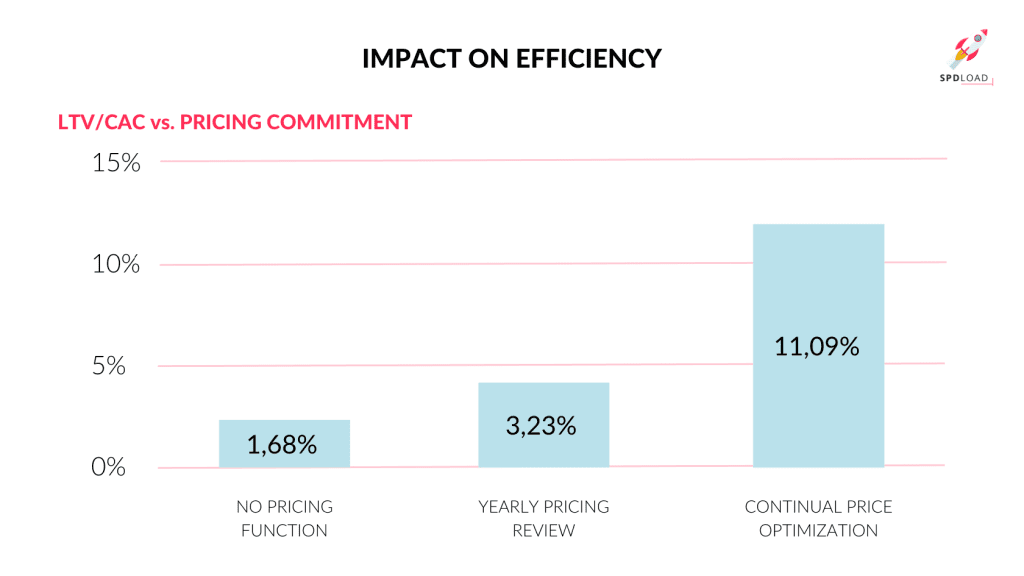
SaaS Pricing Models: The Basics
Since a SaaS pricing is a process, the pricing models are complex elements, that contain different business hypotheses to test. Thus, I listed 7 Software-as-a-Service pricing models to consider.
The pricing model is the only approach to implement. SaaS sales may contain the fact of a customer’s willingness to pay and different psychology tricks for better performance.
- Per user pricing model is the most popular option in the cloud software world. Sometimes, that model modifies to per active user pricing model. This model is easy to implement, as well as it eases the calculation of the unit economy. But the pricing challenge lies in understanding what metric should be laid on the basis of calculations. One of the best examples of well-used per-user pricing is Slack.

- If you already have a few buyer cohorts, then it is time to use the tiered pricing model. The challenge is to configure feature adjustments without losing service value. But it straightly connects with the main drawback of this model. How would you justify the features/pricing fit to a customer? Shopify has done it perfectly.

- The simplest pricing option is a flat-rate model. The main idea is to sell your product for only price with no features’ customization. However, oversimplifying often leads to revenue or customers’ losses. It’s called a flat-rate pricing paradox. It is an effective model, if you deal with light business logic and limited features. Smart Bundle Upsell is a good example of implementing this pricing.
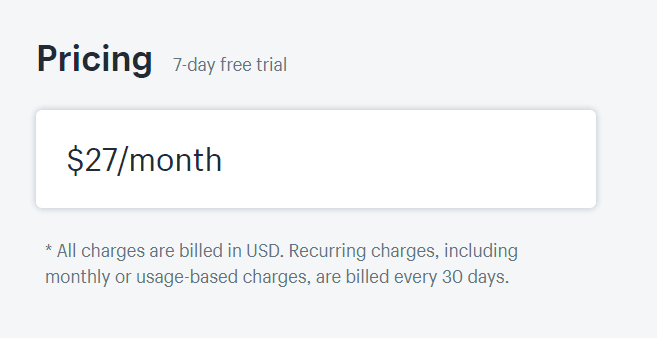
- Per usage pricing or Pay as You Go pricing model. It is a very specific model for SaaS since customers have to always monitor costs while the company cannot precisely predict revenue. However, it is a perfect choice for payment gateways like PayPal.
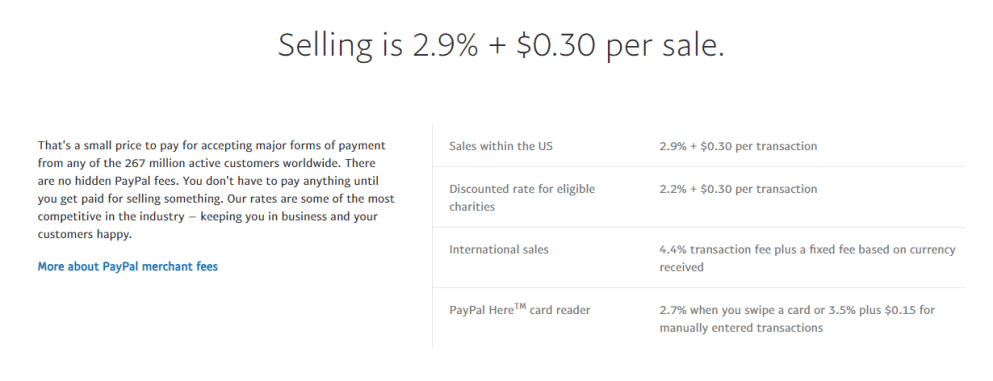
- Another specific type is per storage pricing model. The well-known example is Google Drive with only 15 GB of free space. It’s a simple and easy-to-predict model that works well if your product focuses on data. Dropbox, for example, tells why do users should upgrade storage plans.
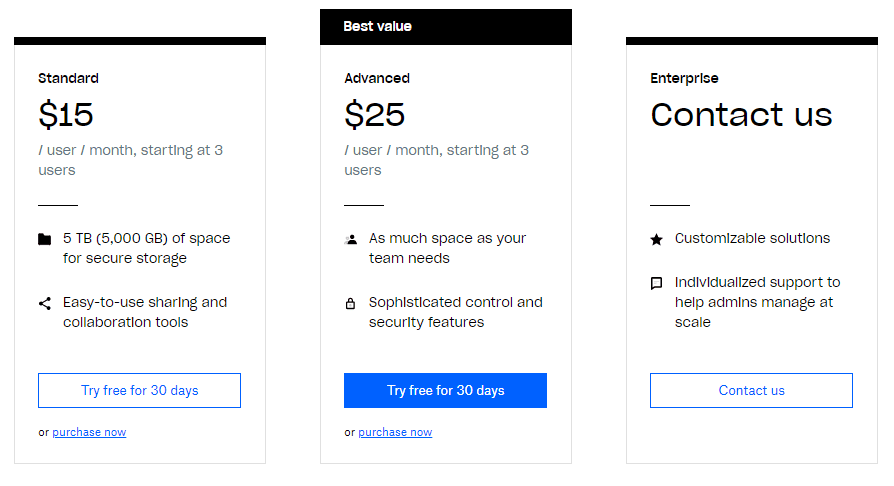
- The freemium pricing model is a common choice for SaaS. But there are a lot of discussions. How to separate free and paid features? Is it fair to your customers? Still, it is a great model that helps to make your customers addicted and allows to generate referrals. Well, MailChimp chose this strategy. By the way, pay attention to a pricing plans’ order. It’s a common, but a good trick.
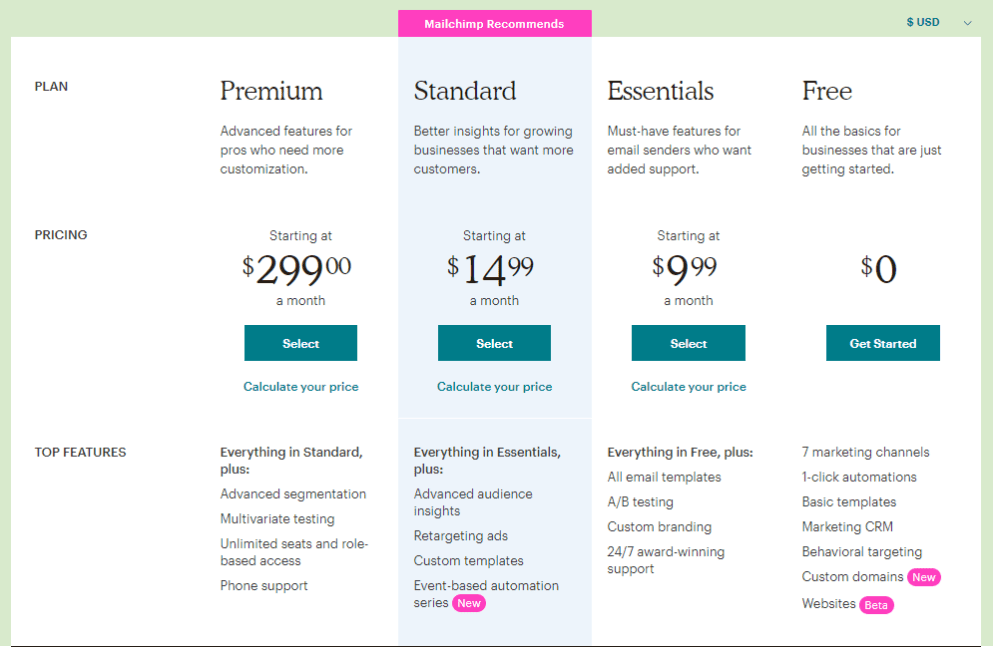
- Free to use or ads pricing model lets customers use your product at no cost. When using such a model, the founders expect to make a popular application and then monetize traffic. There are a few options on how to do it. The interesting one is to sell customer’s behavior or demographic data.
The presence of many diverse SaaS pricing models doesn’t make the choice any easier. Thus, let’s take a look at how to price Software as a Service and which SaaS billing model to choose to start testing price hypotheses.
Supercharge Your Team with Top IT Talent.
How to Price Your SaaS
How to charge for Software as a Service? It is the most popular question among SaaS founders. All these models and calculations look like a random set of numbers for many people.
In contrast to other models of cloud software, SaaS works on a recurring payment base. On the one hand, such strategy of pricing SaaS software is challenging and costly. Permanent customer acquisition, nurturing and retention make a self cost higher.
But on the other hand, such pricing gives flexibility and a variety of options to try. But how do you find a starting point for a profitable price?
Let’s consider 3 pricing models and decide, which of them makes the best fit for your startup: cost-plus pricing, competitors-based pricing or value-based pricing.
Cost-Plus Pricing
The cost-plus pricing model is the easiest way to make your SaaS work in a profitable way. Sum up all costs and add over your percentage to that. That is the most basic form of pricing.
It is easy to understand the motivation to follow this way, since it is based on two main advantages:
- Easy calculation. You do not need any specific skills or activities to set up a cost-plus model. Just calculate your costs and add the margin. Yes, it is that simple.
- Cost covering. Another benefit is a “loss-free” feeling. You literally cover all your costs in the simple way. That’s the reason, why this approach is so popular.
Cost-based pricing model is a good start point to test customers’ willingness to pay. You know how much your development, design and sales cost. But there is a nuance, that ruins this simple scheme.
Costs will grow over time. There might be unexpected costs or other black swans like an increase in churn rate, new competitors on the market and so on.
Tracking customer retention is essential, and this churn rate calculator can help measure your customer loyalty.
While SaaS itself is flexible, a cost-plus pricing isn’t flexible at all. How often can you raise the price in a pain-free way? This is the trick of cost-plus approach.
At first, you generate your profit, then you generate less, then you raise the price and generate profit again. But there’ll be a moment when expenses significantly exceed revenues. Then, each new client will bring not profit, but expenses. 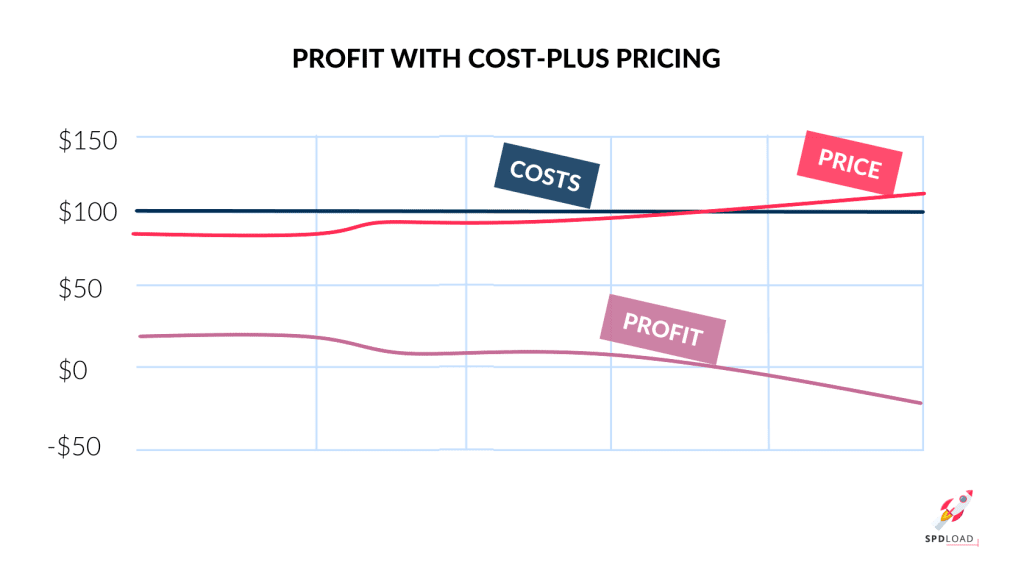
Competition-Based Pricing
If you are going to take an average market price to monetize your SaaS, you will use a competitor-based pricing model. This approach is easy to follow. But I must warn you – your profit won’t grow this way. What is the reason? You are not the one, who makes a decision.
The market and competitors analysis is an essential part of setting up pricing. But only as the factors in a long-tail list of variables to define the final price.
If you follow your competitor’s pricing, and analysis worth nothing as you delegate this option to other player on market.
The first benefit of this model is simplicity. Just surf around your competitors pricing pages, sum up everything and choose the best combination of numbers.
The second one is market sustainability. If you follow a successful competitor, there is a low possibility of profit loss miscalculations.
But these bonuses may serve your SaaS a dirty trick. Why do you need an idea validation, interviews with the target audience, prioritization of features, if you just copy someone else’s approach?
Then what is the point of offering some kind of value, if the remuneration is regulated regardless of your costs and benefits you provide?
I have no answer to this question, but there is an interesting schedule of how much you will earn with such a model. 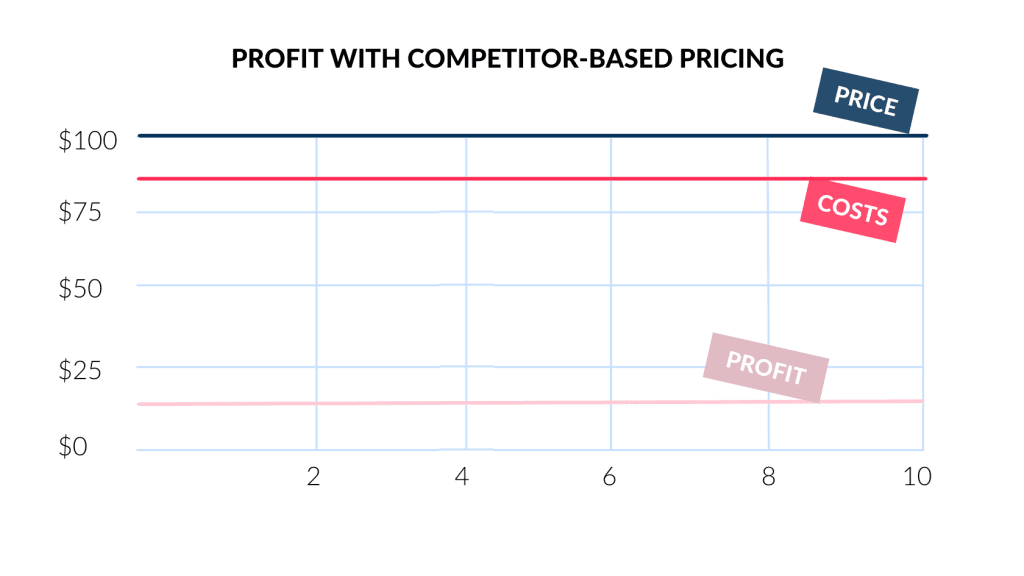
Value-Based Pricing
This is the most customer-oriented model. Moreover, it’s the most profitable one. Why? Because this approach allows to kill two birds with one stone.
Value-based pricing is the process of exploring how much your customers are ready to pay for the value your SaaS provides.
As a result, founders are able to propose the maximum values and charge as much money as people ready to pay.
There are a few pitfalls. The first one is how to define value? At the stage of product planning, you should think about what makes a difference between you and other players on the market. Maybe your main benefit is time-savingness? Or you provide better UX or more features?
That’s all may be a value for your customer – quantitative vs qualitative. The only and the best way to clarify what is the value your customers are ready to pay for is conducting dozens of interviews to discover pain points.
The complex of values as a single solution makes your SaaS unique and worthy to pay for. At the same time, you start to take into account the most reasonable factors determining the cost:
- A better understanding of your ideal customer. By asking the right questions to your audience, you’ll get a better portrait of who is your ideal decision-maker. It provides valuable and useful insights, unavailable to reach out in any other way. What are the most relevant problems? What are the disadvantages of the current solutions? What won’t work? What are the interesting ideas?
- Customer’s willingness to pay. When you go to the market, there are already people, that pay your competitors. What do they pay for and why they are ready to pay this money? Communication with customers helps you to analyze the decision-making process and offer a particular complex of values to make the maximum profit.
- Features to build the best product. The results of deep investigation of required values allow you to build The Best Product Ever for your specific niche and particular type of customers. Customer-driven product development is a good framework to combine your vision and market needs.
The basis of value-driven pricing is communication with a customer. The first required thing to make successful pricing is to define your Ideal Customer Portrait. The second thing is to find out how much potential audience is ready to pay.
And what does it all mean for your startup? 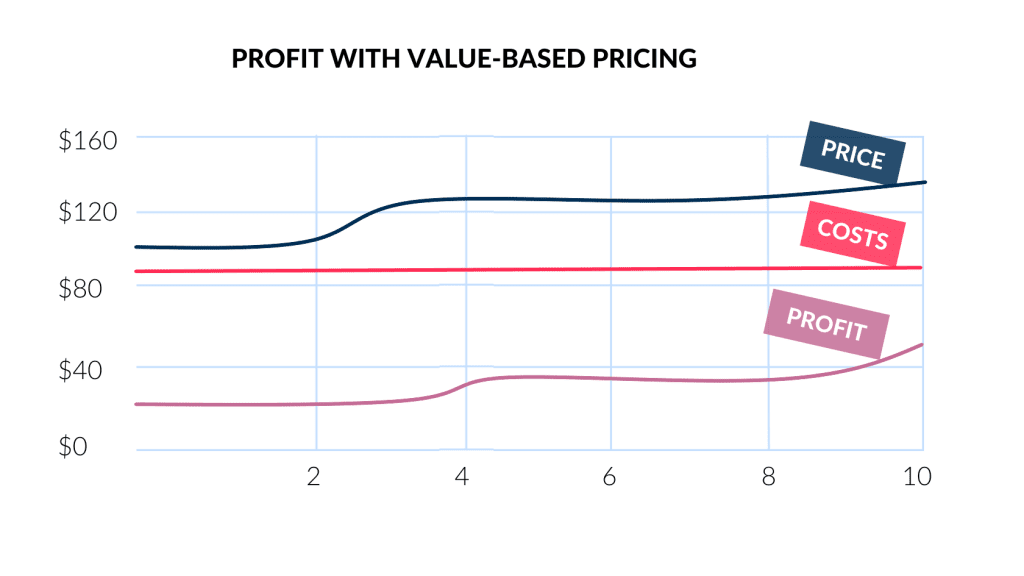
The first thing is the initial conditions. You can charge more than the bottom line at the market, as you know who is your customer and why he or she would pay for your product.
The second thing is, more value equals more profit. It’s not about manipulating with competitors price plans or maneuvering with costs on the cost-plus model. You can raise prices (create new plans, for example) as soon as you are ready to update the value proposition.
Of course, every model has its own list of advantages and disadvantages. Yet the question “How to price Software is a Service?” has the only ultimate answer. And this is a value-based pricing process.
However, another important part of pricing is always hidden. It’s an economy of a startup, that actually decides on how much you have to charge to cover your costs. Let’s take a closer look at what is SaaS unit economics.
Why SaaS Unit Economics Matter
SaaS unit economics are the metrics you should track to improve growth and lower churn. There are many different metrics, like CAC, LTV, ROI, churn rate, you can use to monitor your business. But how SaaS unit economics and SaaS pricing models are connected?
The design of your pricing is always aimed at indicators of growth. SaaS unit economy shows your growth, regression, and stagnation in arithmetic terms. It helps to:
- Objectively look at the testing of business hypotheses
- Test pricing models more efficiently
In other words, the unit economy shows how the price model boosts or slows down the growth of your platform. There are 2 main parameters to track while you are considering the suitable pricing.
Divide LTV by CAC and find out the growth ratio of your SaaS product. The successful business starts with the 3:1 ratio. Yet, it’s important to notice, that extremely successful startups are able to achieve an 11:1 ratio. How?
The secret is in an effective leverage of pricing policy. Propose the required value in an attractive package to the right person, and charge as much as possible.
That’s why SaaS unit economics is one of the most important parts of making a pitch deck for investors. It shows your successes, your failures, but especially it shows the emphasis you have placed. 
SaaS Pricing Strategies
Your SaaS pricing strategy is a framework that integrates a SaaS pricing model and pricing approach.
The software pricing strategy has many goals. It systematizes the efforts that need to effectively achieve these goals. The strategy makes it possible to build a repeatable and scalable process of generating profit.
Thus, let’s take a look at available options on how to conquer a new market in a rapid way or attract high-value clients using 3 different types of pricing strategy.
Explore our SaaS services today
Penetration Pricing
A quick and effective way to conquer your share on the SaaS market is to sell cheaper, than other players. On that point, penetration pricing comes into play.
An essence of this strategy is to win the maximum share of users in a short period of time in order to make money on more profitable subscription plans in the long term.
Such a dumping price approach was successfully used by Slack. I rather say, Slack hacks the SaaS market with penetration pricing.
It’s a brilliant case of an impressive product combining value-based pricing and per user pricing. It allows to attract new users faster, and make them clearly see what do they pay for.
In a nutshell, that’s the secret of Slack’s virality, that helps to upsell and cross-sell faster. If you like the product – use it and pay for it. If you do not use it, you’ll receive the email “X% users didn’t use it, so we return you X dollars”. 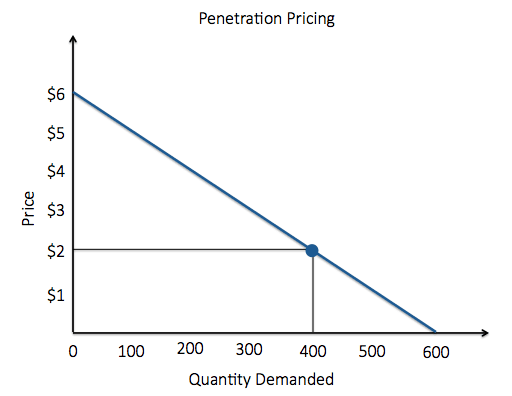
Skimming Pricing
Skimming pricing strategy is based on the initial high price for a product, that decreases over time.
It works well in case you offer a valuable solution in the limited market with no, or with a low number of competitors.
If your early customers receive competitive advantages over other players on the market with the help of your product, they will pay.
But after some time, there will appear alternatives to your offer. Thus, your price may lower. That’s why skimming is also called “riding down the demand curve”.
The reasons to use this approach are simple:
- You can maximize early revenue
- You can create a hype around your brand name
- You receive pricing flexibility, as you decide how cheap to go
However, it will work only if your early customers aren’t frustrated with your product. 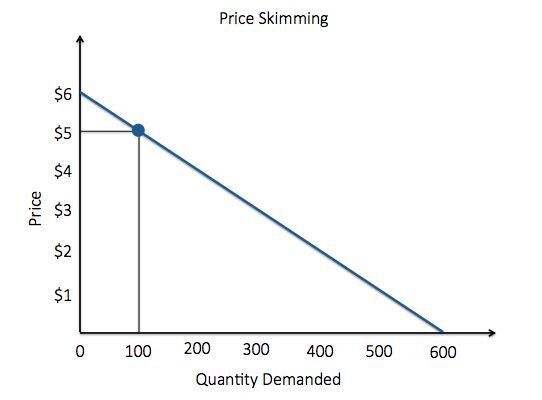
Prestige Pricing
The premium pricing strategy focuses on acquiring and retention of a small segment of luxury customers. The key is to maintain high prices policy.
This type of strategy works well for branded companies with a strong reputation. Or you want to be to have such a company and that’s why you implement all-in plan for premium costs. 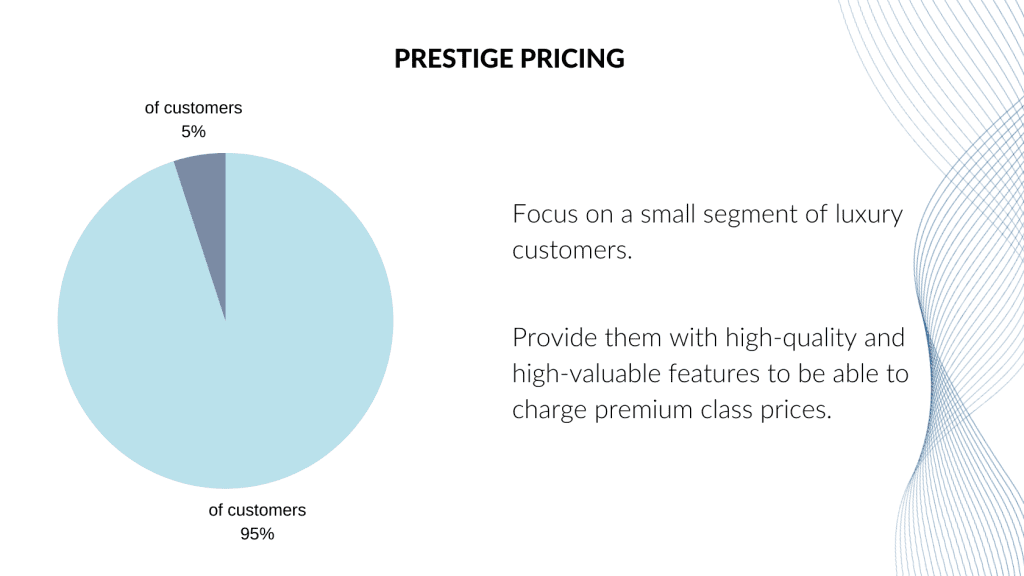
Common SaaS Pricing Mistakes
Mistakes are the unavoidable companions of any startup. But in order to skip their consequences, I promote the idea of testing and revising SaaS pricing in an iterative way.
Thus, I prepared a list of 4 most common mistakes when setting the price for SaaS to let you easily avoid them:
- There are many reasons why founders avoid pricing. The trick is, that with no revenue you won’t survive. Entrepreneurship is about building a successful business model and making money. 17% of startups fail because of no business model. I bet, all of them didn’t have well-thought pricing.
- Look at competitors, but do not copy their prices. Copying of prices creates limitations that stop you from scaling business and generating profit according to value you provide.
- Do not increase prices and you’ll fail like other 18% of startups, that didn’t care about costs. If you insert more value, you start to invest more. Your customers are ready to pay for “no more problems”, so do not hesitate to ask them about the problems they have.
- There are high chances you ask wrong discovery price questions. The common way most SaaS founders use to discover the acceptable price is interviewing customers about their willingness to pay. I have a better concept. Ask the right questions and test the answers immediately.
Psychological Pricing Tactics for Your SaaS
So, you clearly understand who needs your product. You clearly understand what value you give and how much this value costs. You have decided which SaaS pricing model to use.
But there is still room for earning more.
Pricing sends a very strong signal for our brain. Teams of marketers and sales learned how to optimize the pricing page design to make the sales process much more efficient.
There are 3 key elements that underlie psychological pricing tactics to design pricing page:
- There is verified information on motivating customers to use your product
- There are a few offers to different Ideal Customer Portraits, that perfectly match ICPs’ differences and expectations
- There is a clear demonstration of particular metrics that are the basis of the business values of SaaS that define your prices
A well-through pricing page design could boost up sales conversion. But you need to remember that design is not a push-factor. The location of prices also has an important impact.
That’s why I listed 5 pretty good examples of well-thought designs and psychological approaches that can make customers pay.
Without a doubt, the way you structure your pricing page and what kind of pricing method you choose will have a major impact on your SaaS revenue.
The problem is, it’s only one part of the story.
For us, the one thing that works is the “decoy” option on the pricing page.
For example, you want to sell your SaaS for $20 per month. This is why you add three options, for $10, $20 and $30. The third, most expensive option is a decoy put there for customers to think that $20 is the best value for money that they can get.
If someone opts for that pricing plan, that’s another $10 extra that you’ve earned, but in reality, the plan is just there to make the customer focus on the plan which you really want them to purchase.
This is a low-risk strategy that works really well for different SaaS niches and it’s the reason why I recommend all SaaS companies to have three plans. No more and no less.
Cassy Aite, Co-Founder and CEO at Hoppier
Price Anchoring
The price of something is a relative concept of something. And just relativity is a manipulative factor to use price anchoring.
To use this approach, place the most expensive package in a prominent place. There is no guarantee that people will buy it. But the main thing is to give the impression that other options are more accessible.
Then, at the cross-selling or upselling stage, you can repeat this trick in order to move from a more expensive to a more “reasonable” price package.
A famous trendsetter in an area of email marketing and one of the most valuable SaaS companies in the world use this approach. I am talking about MailChimp.
Find out which other email marketing software platforms are worth your time and investment.
Charm Pricing
Charm pricing is a strategy of using the number 9 at the end of the price. It works because of the “Left Digit Effect”. When people see $400, they associate it with $400. But when they see $399, they associate it with $300.
Odd pricing follows a similar principle but employs odd numbers at the end of the price.
The world-famous kanban management tool Trello uses both types.
Product Bundling
Product bundle pricing is an approach to pack a few different products for a single price. Usually, these products in a plan cost cheaper, than when they are sold individually.
It’s a good way to sell complex SaaS with a lot of addons and a wide ecosystem of related apps.
An example of such a product is Microsoft’s Office 365 Suite.
Free Trial Pricing
The trial pricing is the approach to sell your SaaS for a less price in a limited period of time.
Trial is a good starting point to reduce many barriers to start using your SaaS. The whole idea is that customer will see how cool and efficient is your product and continue paying subscription fees.
I am sure that you have already encountered the trial more than once. Personally, I like the style and presentation of Ahrefs.
Analysis Paralysis
Now, pay attention, an example that is better not to implement!
Analysis paralysis builds on the psychological paradox of choice. If people see more than 10 options, it becomes too hard to make a decision.
Columbia University’s study shows, that when customers have to choose from 24 options, only 3% actually buy a product. But when customers choose from 3 options, 30% make a purchase.
In the screenshots above you can see only the price plans. But the features themselves are located under them, and rightly so.
The wrong approach would be building an old page design with prices for chatbot solutions from Intercom.
Check out our insights on custom software development cost that cover what drives prices and how to manage expenses.
Bonus Infographics
The SaaS industry is growing rapidly. Learn how to start a SaaS business from scratch. 
Great SaaS design isn’t just about looks — it’s about solving problems. Learn how to design SaaS software that customers love.
Ready to Take Your SaaS to the Next Level?
SaaS success requires robust yet flexible architecture, intuitive UX design, and smart pricing strategy. Rather than spreading your team thin across these complex domains, bring in specialists.
Our experts seamlessly handle every aspect of creating a profitable SaaS business:
- Pricing modeling and optimization
- User research and journey mapping
- Architecting scalable, high-performance tech
- UI/UX design focused on conversion
- Ongoing feature enhancement and support
We’ll analyze your concept, model costs, and revenue, map out technical requirements, and provide actionable recommendations for launching strong.
Contact us today to accelerate your SaaS journey.
Discover some of the best SaaS startup ideas that are driving innovation in the tech industry.
Need help building your SaaS product? Learn how to outsource SaaS development the right way.





